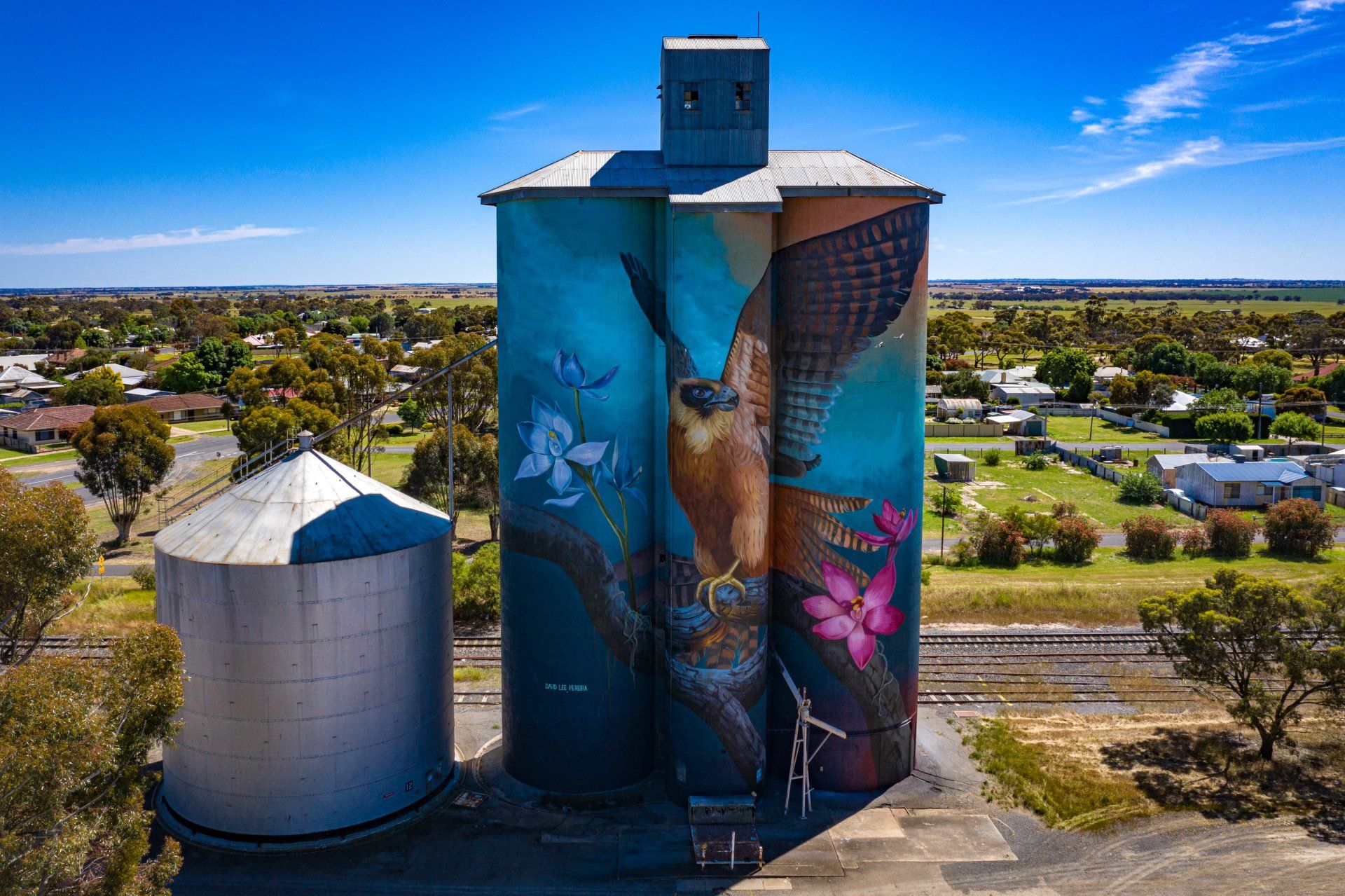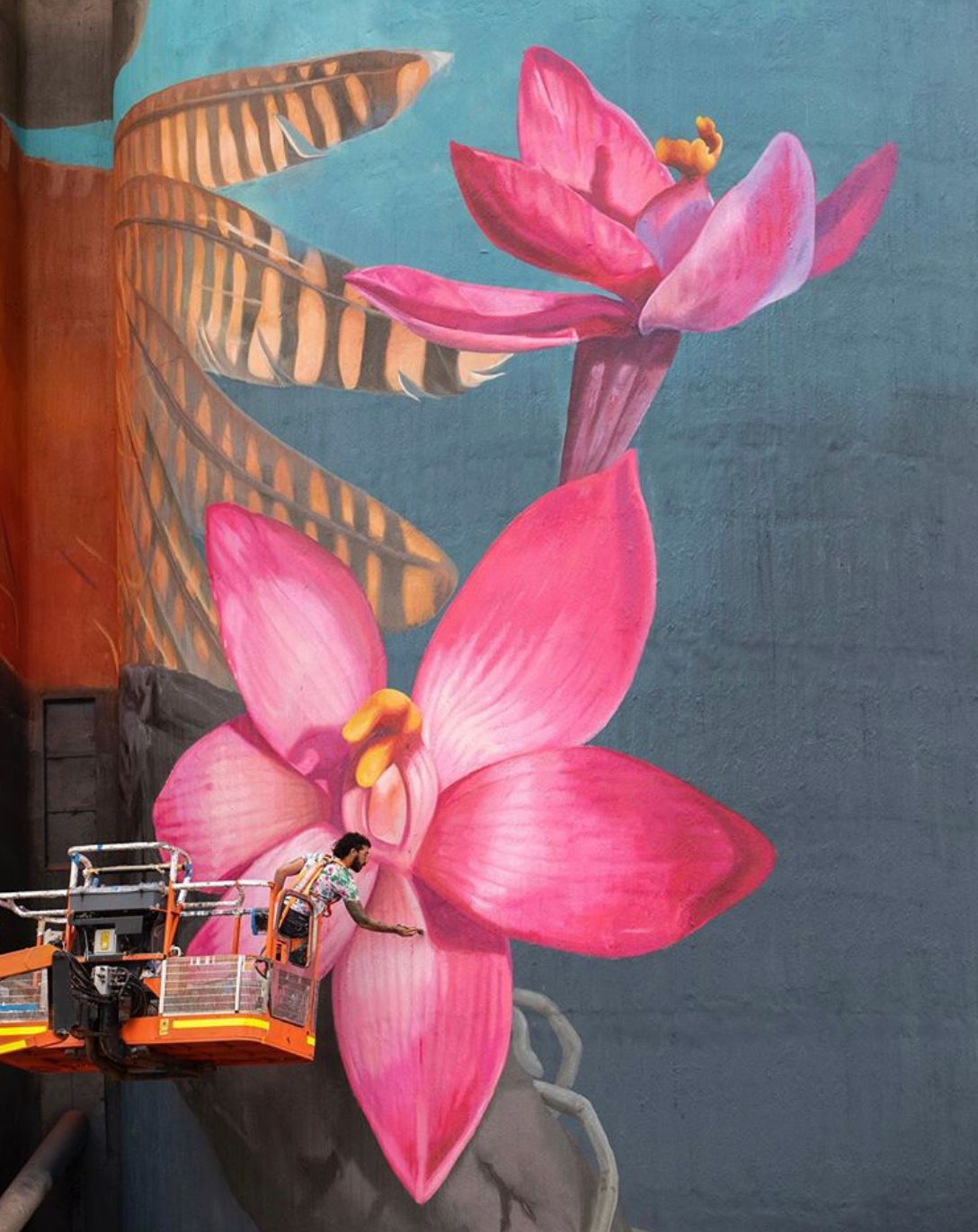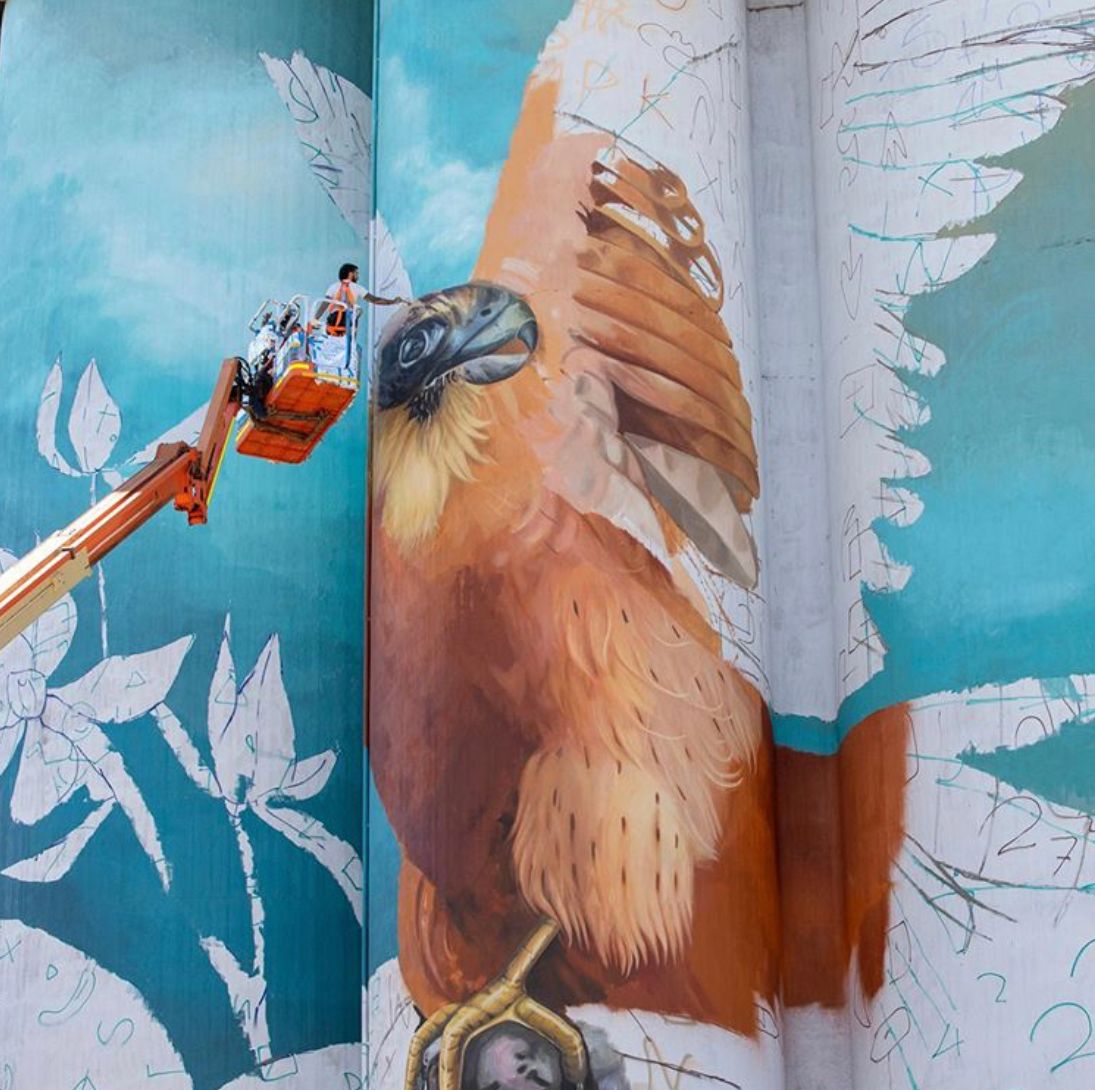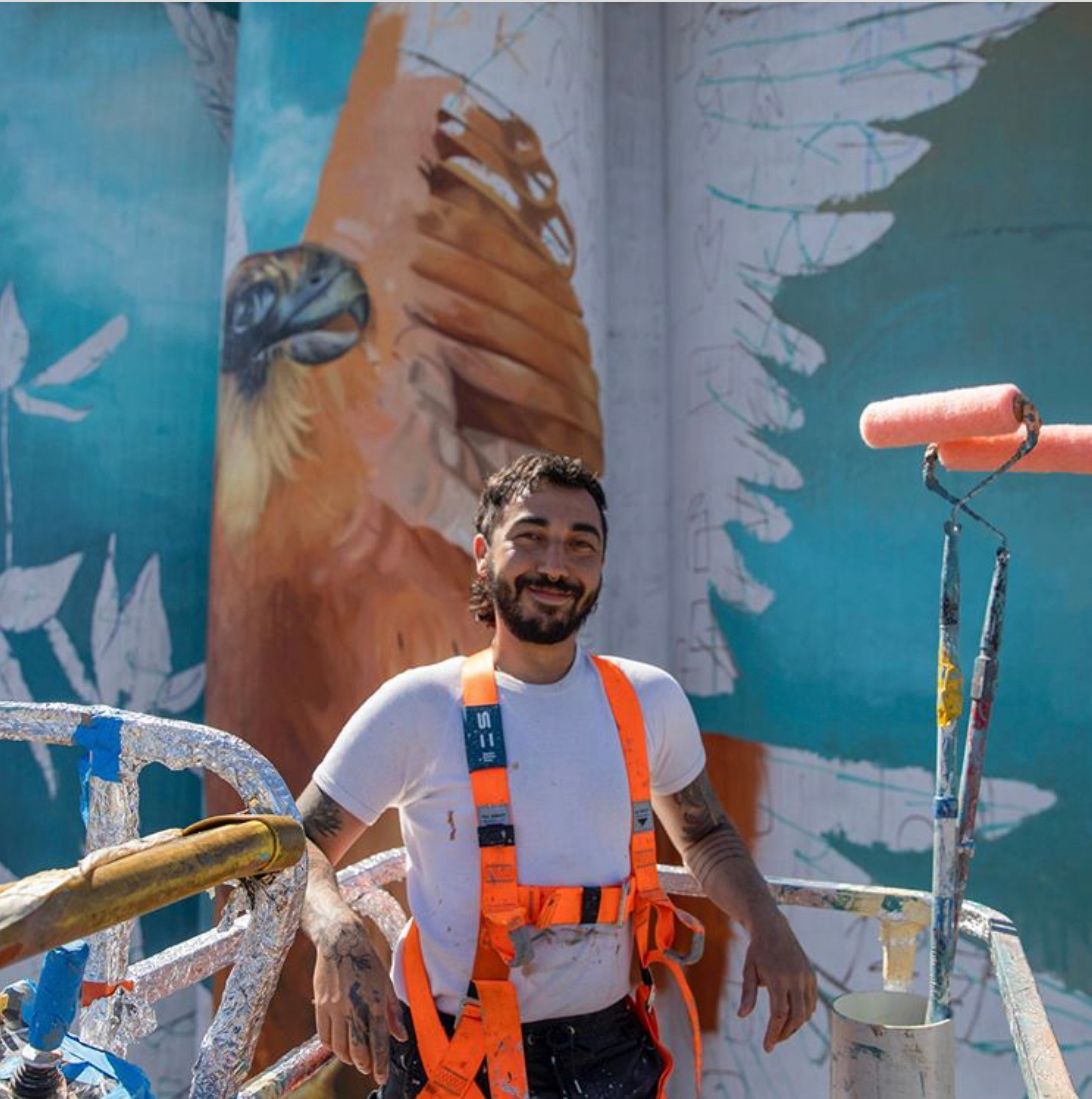
Photo by: Aaron Powell
GrainCorp Silos at Kaniva -Victoria
Artist: David Lee Pereira
Location: Progress St, Kaniva, Victoria
Proudly owned by: GrainCorp
Video by: Henryk Kobylanski of
aichkaye.com
The Artwork
The design features the Australian Hobby bird. Smaller than other falcons, it
is one of six Australian members of the family ‘Falconidae’. The Australian Hobby is
relatively slender and long-winged. It is often seen hunting in vegetated urban areas, as
well as in almost any lightly timbered country. To the left of the bird is the scented sun
orchid (Thelymitra megacalyptra) with the salmon sun orchid (Thelymitra rubra) on the right.
Flowering occurs between September and November, and they generally only open on
warm, humid days.
The Artist
David Lee Pereira is a Melbourne-based studio and mural artist. He was
assisted by fellow artist and friend Jason Parker. Local photographer Cindy McDonald
provided the reference images that David chose for the silo. “We painted for over 200 hours
straight, through the elements and the cockatoo attacks and rain, painting with 400 litres of
paint to create this tribute to the Little Desert. I wanted to respect native Australia, we need
to be reminded to cherish and save it.” Said David. The Kaniva GrainCorp Silo was
completed in October 2020. David also painted the GrainCorp Silos in Merriwa NSW.
Little Desert National Park
Flora and Fauna Diversity: The artwork celebrates the nearby Little Desert National Park
and its diverse flora and fauna. The Little Desert National Park stretches from the Victorian
Border to Dimboola. It rates high in botanical significance and, in late spring after good
rains, features wildflowers and some orchids. The Little Desert dispute of 1968 was a watershed in
Australian environmental politics, marking the beginning of conservation and a new
consciousness of nature.
Kaniva Grain Silos
Before the advent of silos, bagged wheat was loaded directly onto rail wagons. When wagons were unable to keep up with grain production, bags were stacked and stored in the railway yards. However, the limitations of wagon capacity led to substantial grain losses due to wet weather, rodents, and insects. To address these challenges, a silo building program was initiated along existing railway lines. In 1934, legislation authorised the establishment of the Victorian Grain Elevators Board, now known as GrainCorp. The Kaniva Silo, standing at 29.6 meters high, is a prime example of this initiative. It is one of 91 silos built in Victoria between 1935 and 1950 using this design. These silos are open-topped bins with corrugated galvanised iron roofs, facilitating receiving and out-loading rates of approximately 80 tonnes per hour. Construction on the Kaniva silo commenced in January 1939 and was completed within the same year, with a capacity of 2,950 tonnes. In the 1939-40 harvest season, it received 4,979 tonnes of wheat. The Kaniva Silo was in use until 2014. The GrainCorp Receival Centre is now located at Lillimur which has the capacity to handle 120,000 tonnes. Kaniva now grows a variety of grains; wheat, barley, canola, faba beans, lentils, chickpeas and field peas. It is also the most significant durum wheat growing area for pasta production in Victoria.
Further information can be obtain from
www.kaniva.org





